Patellar Subluxation Exercises
Read More >
The patella is the bone that we call the knee cap. It is called a sesamoid bone, which describes that it is a bone that sits within a tendon, it sits within the tendon of the quadriceps muscle. The patella makes part of the patella femoral joint, a joint with the femur, the bone of the thigh.
A fracture to the patella of the knee will be caused by trauma, either a fall or a direct blow to the patella. It can be a simple or a complex fracture as the bone is able to get a simple single fracture line but remain intact or it can break into multiple pieces. Complex fractures may need surgery to hold the parts together to ensure good healing.
If a patella fracture is simple it will heal well without surgery. In most cases of bone fractures, for a healthy individual, a bone will take 4-6 weeks to heal. The patella will usually take longer, 8-12 weeks is common for a simple fracture and longer for more complex cases, up to 6 months. This is because any use of the knee can potentially pull the patella from opposite ends, which can inhibit healing.
In the acute phase after fracture, the knee must be mobilised with either a cast or knee brace locked at full knee extension. The knee must be kept in full extension for the initial 4-6 week period. Rehabilitation for a patella fracture is best guided by an experienced physical therapist and will only start once the therapist is happy that the patella has healed, usually following x-ray confirmation showing bone union, and once there is no pain on palpation of the patella. During this phase pain management is important and oral medication will be recommended, this can also help with assessment and diagnosis. Crutches will be needed during this phase and it is recommended to be completely non-weight bearing.
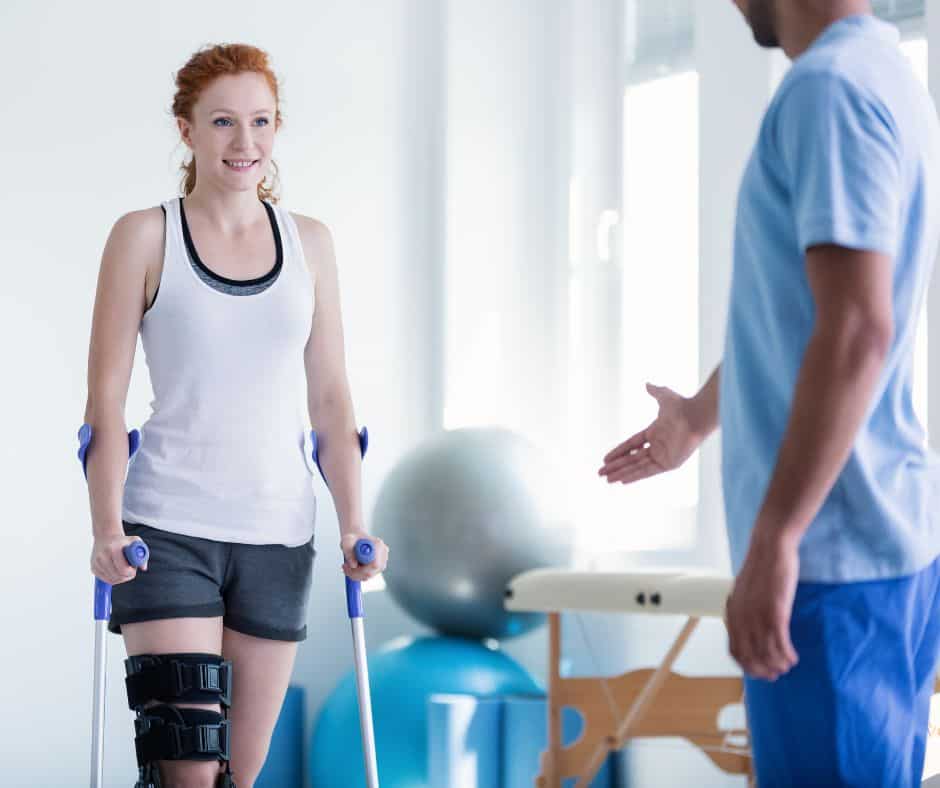
Once there is evidence both clinically, with no pain on palpation, and radiological, with signs of healing on x-ray, then physical therapy can be started. The initial phase is the regain full mobility of the knee joint as it will be stiff after being immobile in extension for the past weeks. Once full mobility has been gained the focus of rehabilitation should be on strengthening the quadriceps and regaining normal function and gait, and gradually returning to impact exercises like running if appropriate for the individual.
Patella fracture strengthening exercises should start with open chain strengthening of the quadriceps, that is exercises where the foot is not fixed to the floor.
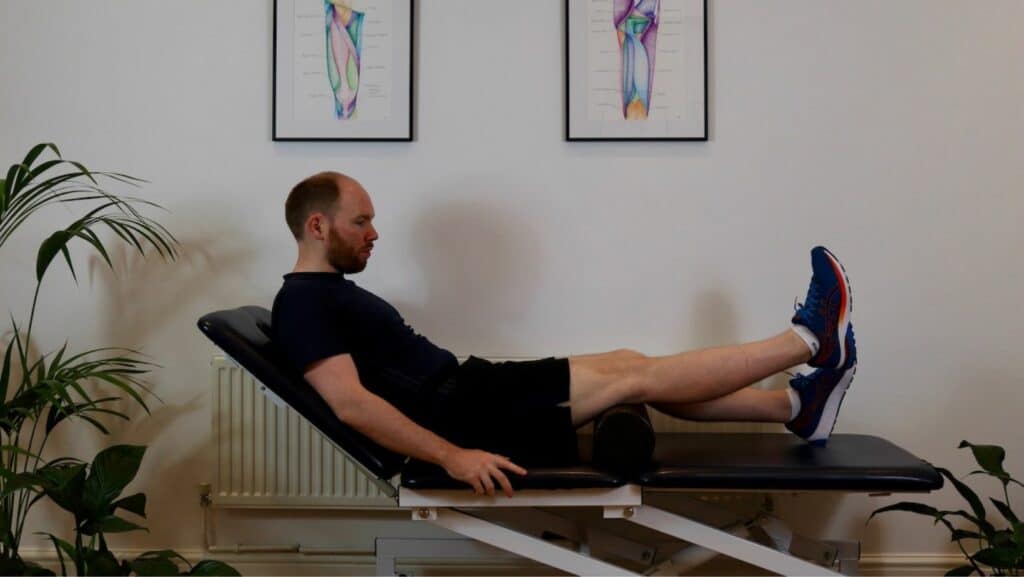
Put a pillow or foam roller under your knee. Push your knee down into the roller or pillow to straighten your knee and lift your foot. Hold this for 10 seconds and repeat 6-10 times.
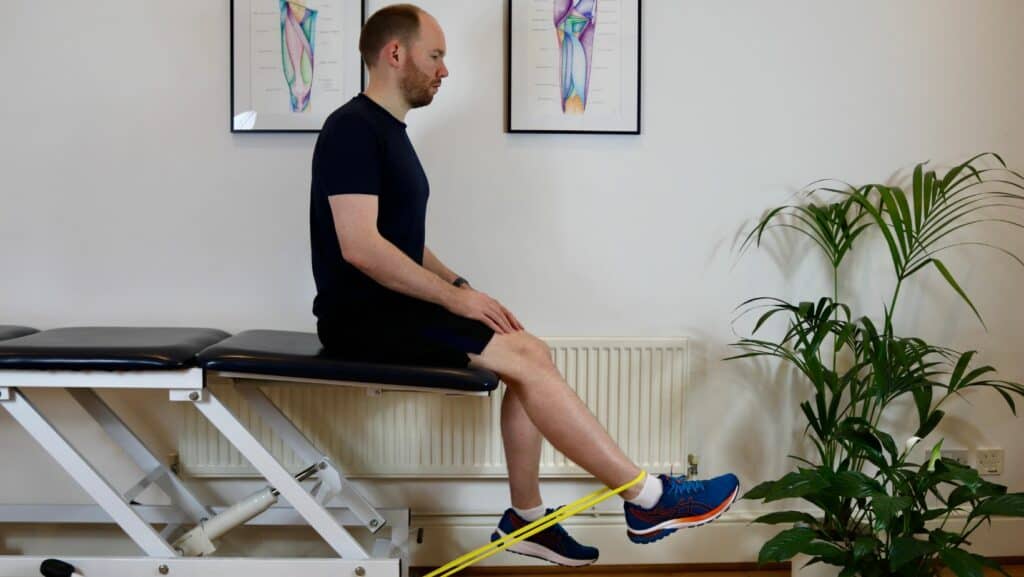
Sit with a band tied around your ankle and onto a stable base. Straighten your knee against the resistance of the band. Slowly straighten, hold for 3 seconds, lower and repeat 6-10 times
Closed chain exercises, where the foot is on the floor, such as squats will be the next phase of strengthening.

With or without a band around your thighs, you should lower your pelvis down and backwards as though to sit in a chair. Squeeze your gluteal muscles and push your pelvis forwards to return to standing. Repeat 8-15 times for 2-3 sets.
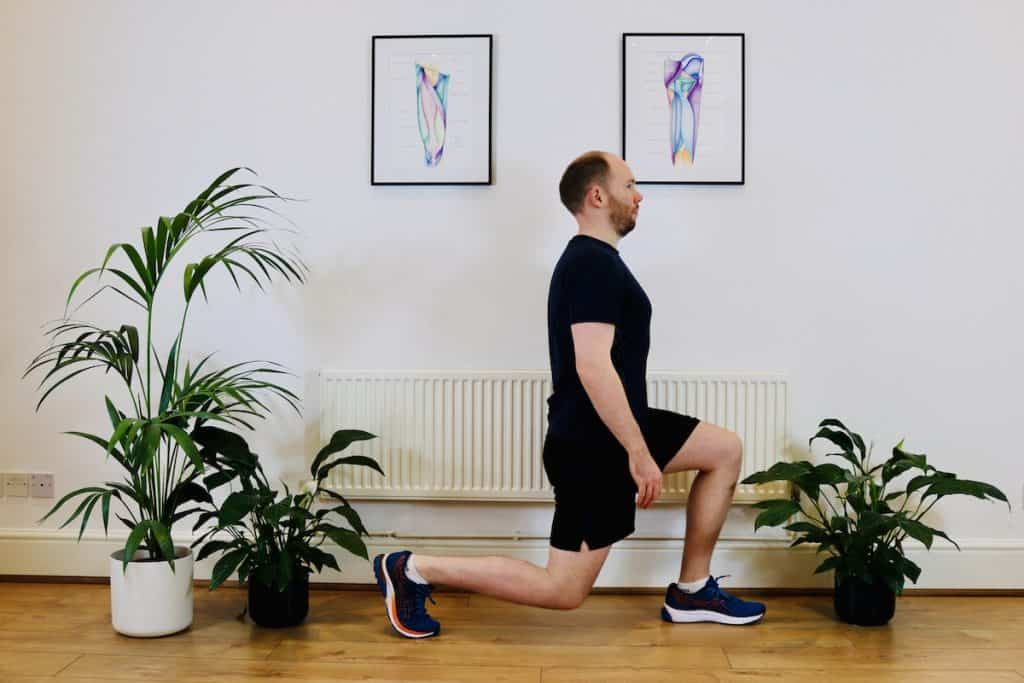
Take a large step forward then lower your back knee down to the floor, keeping your front knee over your ankle. Slowly lower straight down, and return straight up, pushing through the heel of your front leg. Repeat 8-15 times for 2-3 sets.
In almost all cases a broken patella will be in a brace with the knee straight to help the fracture heal. It can therefore be difficult to find a comfortable position to sleep in. Most people find it best to sleep on their back and to have a pillow under their leg to slightly elevate it, or several pillows under and around the leg to support it and hold it in a position. If you can’t sleep on your back, you might want to try lying on your side with your injured leg uppermost supported with pillows between your legs.
The correct timing of medication can play an important role in getting a good night’s sleep. As sleep is so important for recovery and repair, you should speak with your doctor or pharmacist about medication if pain is preventing you from getting to sleep or staying asleep.
After a patella fracture, you will have a period of non-weight bearing when you will be in a straight knee brace and using crutches. Regaining mobility in your knee and relearning to walk after can be a challenge as you may have had 6-8 weeks or more not walking. To walk well we need the mobility of our joints, good strength and the ability to balance on one leg. Your physical therapist will give you rehabilitation exercises to work on each of these elements. Some of the exercises we mentioned before are helpful for this as well as single leg balancing, which can be made more challenging by closing your eyes or by standing on an unstable surface such as a wobble cushion or even your bed. Once you have these fundamentals, you can work with your physical therapist to coordinate a smooth and even walking pattern. They may get you to practice walking drills that exaggerate specific parts of the gait cycle, such as lifting your knee or pushing off onto the ball of your foot and toes.
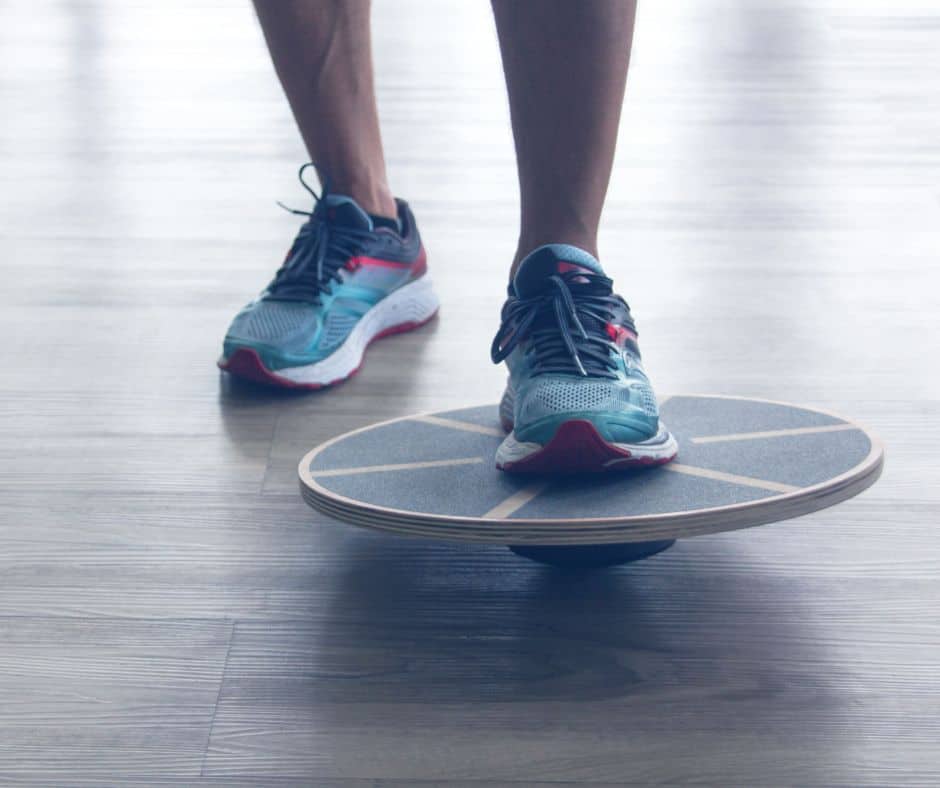

Once walking has been mastered, the more complex task of walking up and down stairs can be addressed. Similarly to walking, this task can be broken down and individual elements can be worked on, such as strength and balance. Your therapist will help you to find a level of challenge that you are able to achieve and practice. That might be using a bannister or a crutch, or finding a lower step to practise on. Often walking up stairs will feel easier to control then slowly lower down stairs, but with practice you will be able to achieve your goals.
This is not medical advice. We recommend a consultation with a medical professional such as James McCormack. He offers Online Physiotherapy Appointments for £45.